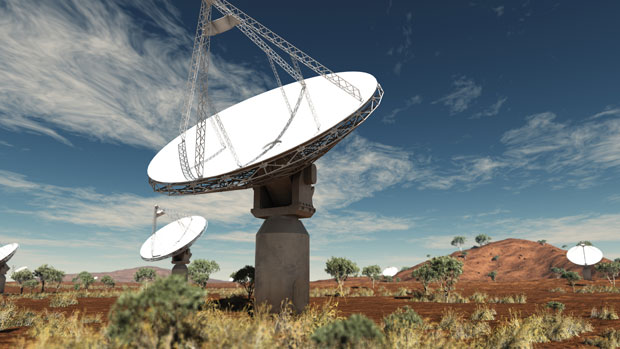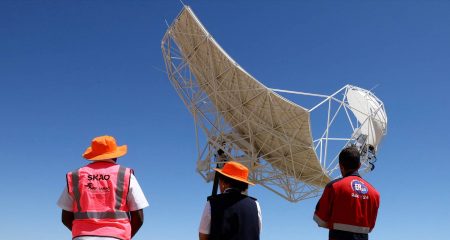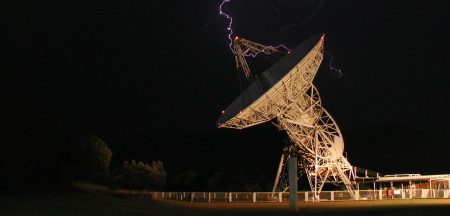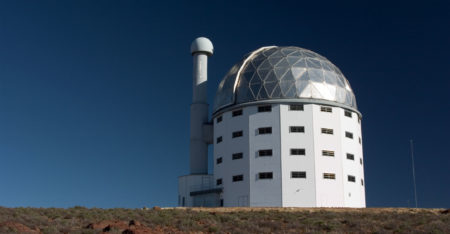
It is difficult to teach radio astronomy, which detects invisible radio waves, to students. It is not like optical astronomy where you can point a dish at the sky and stare at a star, says Anita Loots, associate director at Square Kilometre Array (SKA) South Africa. “The concepts are abstract because you can’t see the spectrum.”
This is particularly important to South Africa now that it has been chosen as one of nine African countries to host the €2bn SKA, the largest radio telescope in the world. The core will be in South Africa.
“We need teams in the partner countries prepared for the SKA in the next decade. You need a strong team of people to operate, sustain and maintain [their telescopes],” says TL Venkatasubramani, known as Venkat, who is the project manager and engineer for the African VLBI Network.
While the world’s eyes are focused on the SKA, a home-grown radio astronomy project is under way on the continent — the African VLBI Network. Although it is separate from the SKA, the development of the network will lay the groundwork and supply the skills for the continent to host part of the SKA.
VLBI stands for very long baseline interferometry, in which four or more radio telescopes observe a single celestial object simultaneously and in effect act as one big telescope. For decades, South Africa’s telescope at the Hartebeesthoek Radio Astronomy Observatory was the only VLBI telescope in the country, plugged into European networks.
The observatory’s MD, Mike Gaylard, says its telescope measures continental drift and polar motion. It also provides an absolute reference for all GPS stations in Southern Africa.
At the moment, there are a number of obsolete telecommunications dishes in countries such as Ghana and Kenya that could become radio telescopes and form part of the African VLBI Network.
Last year, the African Renaissance Fund agreed to put R120m towards the project. But now the problem is one of skills.
“We need to give people the tools to ask why things happen [in radio astronomy]. For example, if your telescope doesn’t point properly, what are the reasons?” says Loots. “We won’t be there once the telescope is handed over, and those teams need to be able to troubleshoot.”
She had previously indicated that the telescopes in the African VLBI Network should be operated by teams in the various countries. “It will be their facility, not ours.”
This is where the African VLBI Network Scaled Training Telescope (ASTT) comes in.
When teams from other African countries come to South Africa for training in radio astronomy, they will build the training telescope from scratch. A team from Ghana is expected later this year.
There are hopes to mimic in other African countries what SKA South Africa has achieved at home — building a sustainable and burgeoning pool of engineers, scientists, technicians and artisans who can work on the different aspects of radio astronomy. Between 2005 and 2012, SKA South Africa awarded more than 400 scholarships and bursaries to students, including many from other African countries.
The transfer of skills and knowledge is the main objective, says Japie Ludick, the subsystems manager for antennae at SKA South Africa. “We’ve been dealing with Ghana and Mozambique and realised we needed … a training aid that could teach the fundamentals.”
This is why SKA South Africa interns are working on the ASTT project.
“You don’t realise as an engineer who’s been working in the field for a while that each aspect [of a radio telescope] has training and learning associated with it,” says Ludick.
The mini-telescope “replicates as many features of a real telescope as possible… It replicates how it’s done on the real thing, otherwise the teaching part would be lost,” he says.
Austin Gumba from Kenya has been studying for a diploma in electronics from the Durban University of Technology, but “once we get our training skills here, we want to teach fellow engineers [in Kenya]”.
Limpopo-born Kgaugelo Maake is an electrical technician on the project and her role is to assemble the data packs for each complete kit, from the hardware and the PC boards to the software.
The first telescope prototype cost about R30 000, says Venkat, but “we should be able to bring it down to R15 000 to R20 000, including the laptop that goes with it”.
On whether to protect the training telescope’s intellectual property, he says: “My interest is to make it affordable and go for industrialisation.”
Loots says with conviction: “We have a responsibility to share [this technology and knowledge], even with those who can’t afford it. Many African schools won’t be able to afford these. We have to grow a large community in Africa … and I don’t want to create a barrier to people learning.” — (c) 2013 Mail & Guardian
- Visit the Mail & Guardian Online, the smart news source




